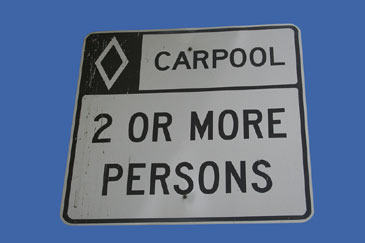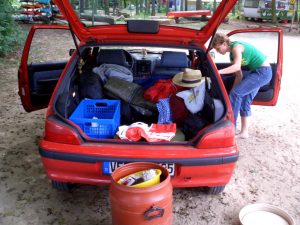

To find a partner, post a notice at your place of work. If you get no response, try posting a notice at other businesses nearby, or at your local supermarket.

If the bus schedule is spotty, or there is no public transportation in your neck of the woods, you may want to raise the issue with your state representatives. After all, it’s your tax dollars that make public transportation possible. The more people request it and use it, the better it will be.
When traveling a long distance, consider taking a bus or train, instead of flying.


Motorcycles, electric bikes, and scooters can carry you longer distances, using fewer resources than your car.


It’s best to get the support of your school before starting a walking school bus. The principal, a member of the school board, or an enthusiastic teacher might help to spread the word. You could also put a message in a school newsletter, or present the idea at the next parent-teacher conference. And it’s a good idea to have the local police or a road safety coordinator review the proposed route to make sure it’s safe.


- Service your car regularly.
- Keep your tires properly inflated.
- Don’t let the car idle for more than 30 seconds.
- Accelerate gradually and stick to the speed limit.
- Use cruise control for highway driving, whenever possible.
- Turn off the air conditioner or dehumidifier when it’s no longer needed.
- Reduce your load—empty your trunk of all unnecessary items.
- Remove a roof rack when it’s not in use.
- When buying a new car, choose a more efficient model, or consider buying a hybrid car.
- Don’t buy fuel with a higher octane than your car’s manufacturer recommends—it won’t make your car run faster or better; it will just cost you more money!





